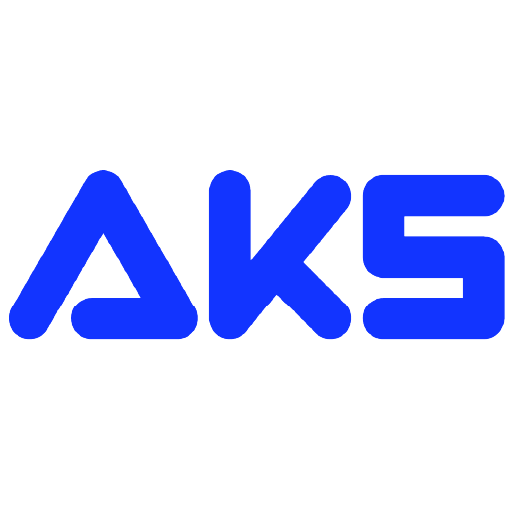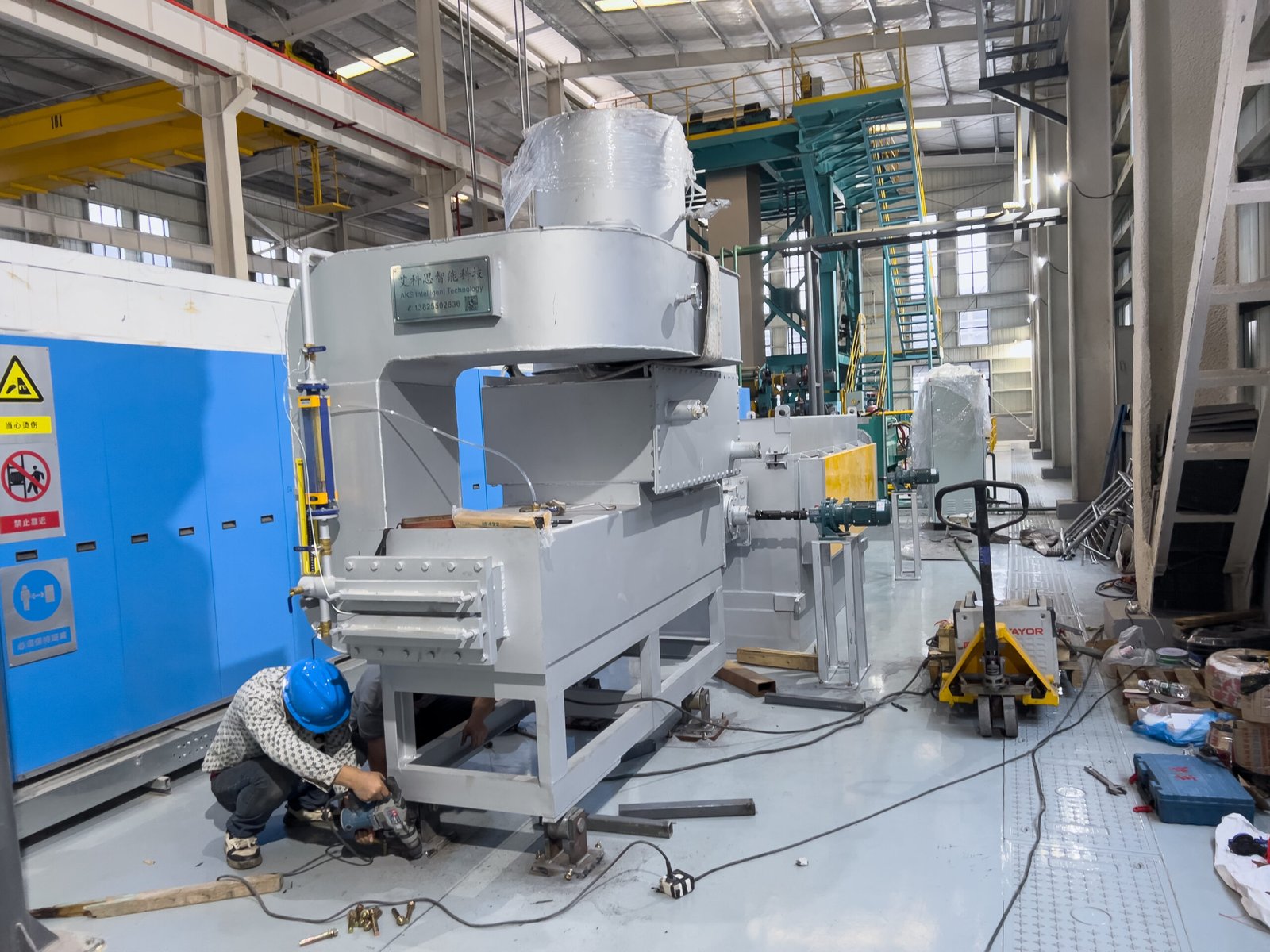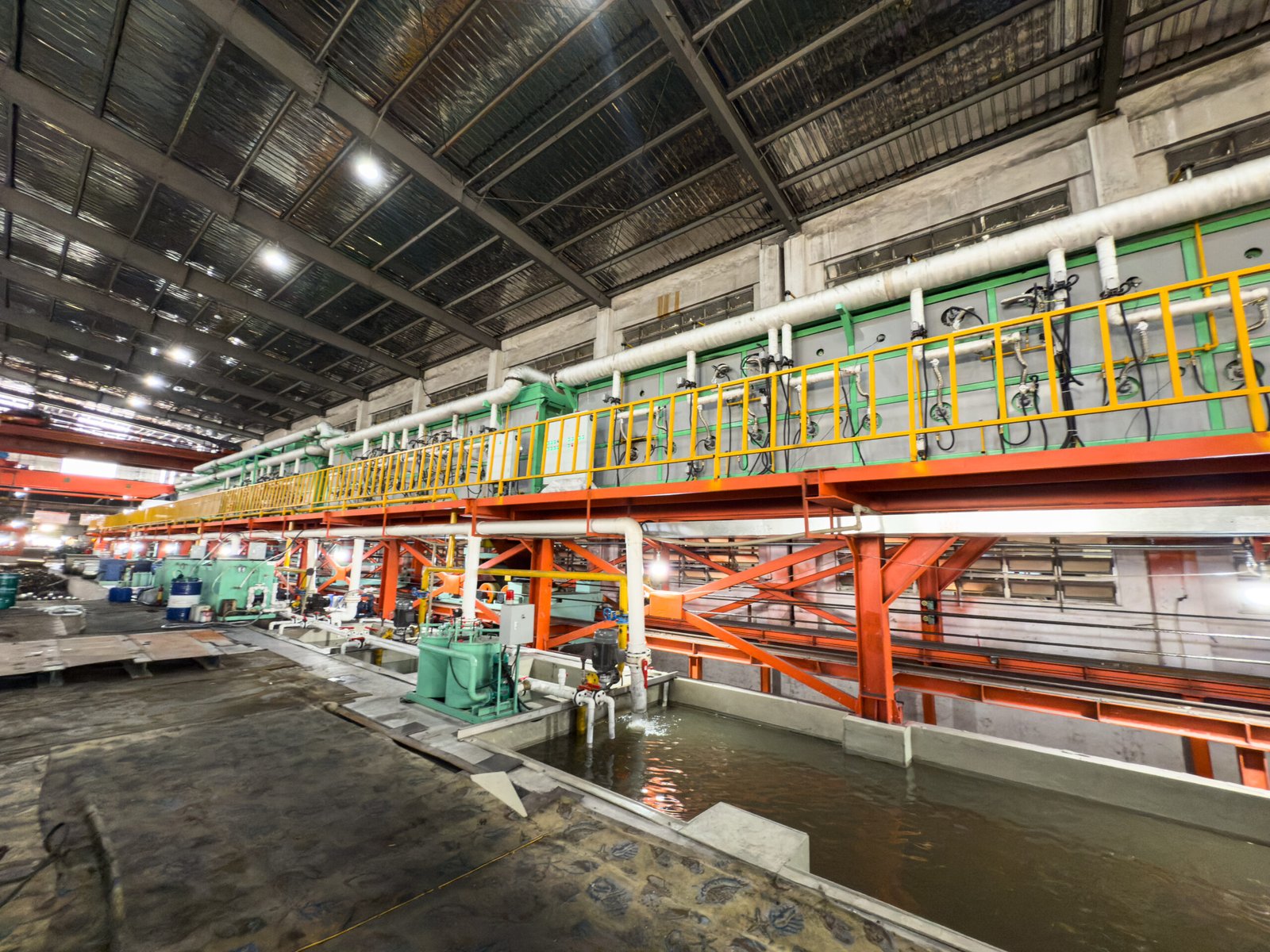What Essential Questions Should You Ask Before Buying Bright Annealing Stainless Steel?
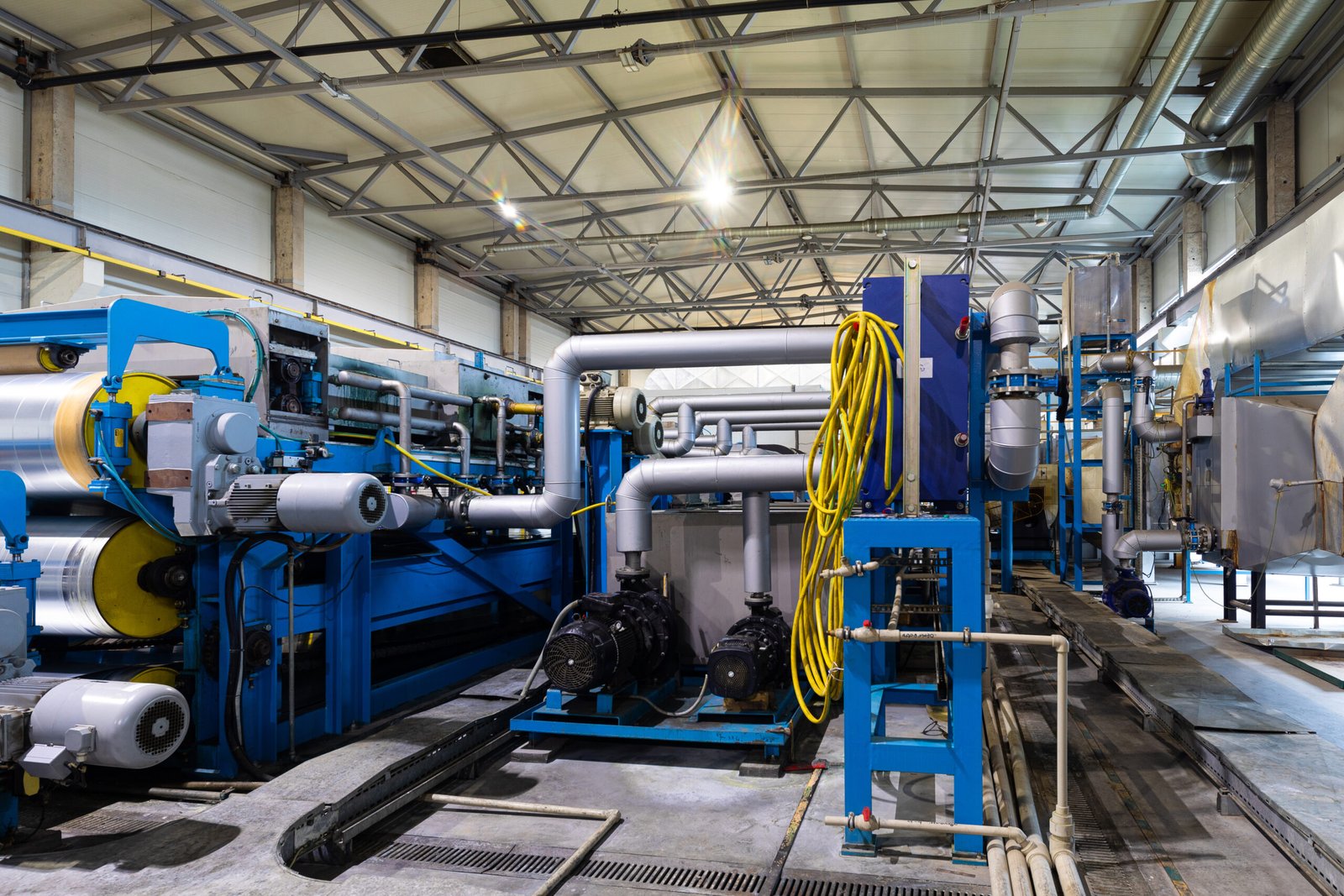
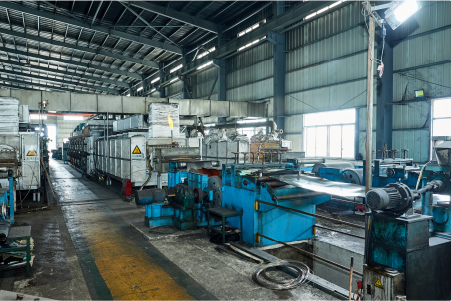
Are you struggling to source high-quality bright annealed stainless steel? Inconsistent finishes and poor mechanical properties can derail your production schedules and damage your company’s reputation. Choosing the wrong supplier often leads to costly rework, rejected parts, and dissatisfied customers, eroding your profits. By asking the right questions upfront, you can vet suppliers effectively and secure a partner who delivers consistent, top-tier material every time.
Before buying bright annealed stainless steel, you must inquire about the supplier's specific annealing process controls, material traceability, quality certifications like ISO 9001, and their ability to provide consistent mechanical properties and surface finish. These questions are critical to ensuring you receive reliable, high-quality material.
In my years of experience at AKS Furnace, I’ve seen firsthand how the quality of the annealing process dictates the quality of the final steel product. The questions you ask a potential steel supplier are your first line of defense against subpar materials. This isn't just about avoiding a bad batch; it's about building a resilient supply chain that supports your growth and protects your brand.
The difference between a flawless, mirror-like finish and a dull, defective one often comes down to the supplier's equipment and expertise1. A supplier using a state-of-the-art bright annealing furnace with precise atmospheric and temperature controls can achieve results that others simply cannot. As we delve into the essential questions, I will share insights from my perspective as a furnace manufacturer, helping you understand the technology behind the quality and empowering you to make a truly informed purchasing decision.
Why is it important to inquire about a supplier's experience in bright annealing?
Do you believe a supplier's experience is just a number on their website? In the world of bright annealing, inexperience leads directly to inconsistent brightness, poor corrosion resistance, and flawed mechanical properties. This directly impacts your product's final quality, performance, and ultimately, your bottom line.
A supplier's experience in bright annealing is crucial because it directly correlates with their ability to control furnace atmosphere, temperature uniformity, and cooling rates. This expertise ensures the stainless steel consistently achieves the desired brightness, corrosion resistance, and specific mechanical properties, preventing costly production failures.
A supplier’s years in business are only the beginning of the story. True experience is demonstrated in their technical depth and process mastery. I recall a client in the automotive sector who was manufacturing high-end exhaust systems. They were struggling with inconsistent finishes from their steel supplier, which caused significant delays. After switching to a supplier with documented experience in annealing the specific 400-series stainless steel they required, their rejection rate dropped by over 90%. This new supplier didn't just have more years in the business; they had deeper knowledge of the metallurgical science underpinning annealing2, which was reflected in their process control. They understood how minuscule variations in the furnace's dew point could impact the chromium oxide layer, which is the key to both brightness and corrosion resistance. This level of granular expertise is what you are paying for, and it’s why a deep dive into a supplier's experience is not just recommended—it's essential for anyone serious about quality.
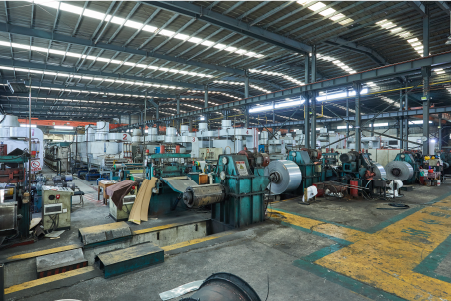
Experience is the invisible asset that separates a mere commodity provider from a true manufacturing partner. In bright annealing, this asset manifests as an intuitive, yet data-driven, understanding of the complex interplay between temperature, time, and atmosphere. An experienced team knows that achieving a perfect mirror finish on a 304 stainless steel coil requires a different set of furnace parameters than achieving a specific tensile strength on a 430 grade for a deep-drawing application. This knowledge isn't learned from a textbook; it's forged in the heat of the furnace over thousands of production cycles. It's about knowing how to adjust the hydrogen-nitrogen mix in the protective atmosphere3 to prevent even the slightest oxidation, or how to program the cooling zones in a continuous annealing line to achieve the perfect grain structure for formability. When you ask a supplier about their experience, you are probing for this deep, practical wisdom. You are asking if they have faced and solved the unique challenges your specific material and application present. Their answer will tell you whether they are simply selling steel or providing a guaranteed, high-performance solution.
The Direct Link Between Experience and Process Control
An experienced supplier understands that consistent output is a function of rigorous process control. They have honed their standard operating procedures over years, ensuring that every coil of stainless steel is treated under identical, optimal conditions. This begins with an intimate knowledge of their own equipment. At AKS, when we commission a new bright annealing furnace for a client, we work closely with their operators to develop specific "recipes" for each grade of steel they process. These recipes dictate precise temperature curves, belt speeds, and atmospheric gas compositions.
For instance, a seasoned supplier will know that annealing austenitic 300-series stainless steel requires a furnace capable of reaching temperatures around 1040-1150°C (1900-2100°F) while maintaining an extremely low dew point in the hydrogen-nitrogen atmosphere4 to prevent any surface oxidation. They will have data logs to prove their ability to maintain these parameters with minimal deviation. I once consulted with a white goods manufacturer who was experiencing "sugaring" (a rough, crystalline surface) on their deep-drawn stainless steel sinks. The issue was traced back to their steel supplier, whose older furnace couldn't maintain a stable temperature across the width of the steel strip, leading to inconsistent grain growth. An experienced supplier with a modern, well-maintained furnace would have prevented this costly defect.
This level of control is what separates the best from the rest. Ask potential suppliers to share their process control data. Inquire about their furnace technology. Do they use advanced PLC systems for automation? Do they have real-time gas analyzers to monitor the furnace atmosphere? Their ability to answer these questions confidently and provide supporting evidence is a strong indicator of their experience and commitment to quality.
Navigating Material-Specific Annealing Nuances
The term "stainless steel" covers a wide family of alloys, each with its own unique personality in the furnace. An experienced supplier doesn't treat them all the same. Ferritic grades (like 430), austenitic grades (like 304), and martensitic grades (like 410) all have different critical temperatures and respond differently to heating and cooling cycles. Experience means mastering these nuances to unlock the desired properties for each specific grade.
Consider the challenge of bright annealing ferritic stainless steels, which are commonly used in automotive exhaust systems and appliances. These grades are susceptible to embrittlement if not cooled correctly through a specific temperature range. An experienced operator using a furnace with a sophisticated cooling system, like the ones we design at AKS with multi-zone jet cooling, can carefully control the cooling rate to avoid this, ensuring the final product is both bright and ductile. In contrast, an inexperienced supplier might use a generic cooling profile, resulting in brittle material that cracks during forming.
To illustrate these differences, here’s a simplified comparison of annealing parameters for common grades, which an experienced supplier would have perfected:
| Feature | Austenitic (e.g., 304) | Ferritic (e.g., 430) |
|---|---|---|
| Annealing Temp. | 1040-1150°C (1900-2100°F) | 815-900°C (1500-1650°F) |
| Atmosphere | High purity H₂/N₂ mix | High purity H₂/N₂ mix or pure H₂ |
| Dew Point | < -60°C (-76°F) | < -50°C (-58°F) |
| Cooling Rate | Rapid cooling to prevent sensitization | Controlled slow cooling to avoid embrittlement |
When you interview a supplier, ask them to describe their process for the specific grade you need. Their ability to articulate the critical control points and potential pitfalls for your material is a clear sign of their expertise.
Case Study: The High Cost of Inexperience in Electronics
Experience isn't just about achieving a good finish; it's about mitigating risk. A few years ago, a manufacturer of high-precision electronic connectors approached us at AKS. They were not buying a furnace, but seeking advice. Their company was in crisis. They had recently switched to a new, lower-cost steel supplier for their bright annealed 301 stainless steel strips, which were used to stamp tiny, spring-like connectors. Shortly after launching a new product, they faced a massive field failure and a product recall that cost them millions.
Upon investigation, we found the root cause was in the material. While the steel met basic chemical and hardness specifications, it suffered from inconsistent internal stresses. The new supplier, in an attempt to increase throughput, was running their annealing line too fast and using a generic cooling profile. This created microscopic inconsistencies in the grain structure of the steel. For a simple panel, this might not matter. But for a precision connector that needs to flex millions of times without breaking, this inconsistency was catastrophic, leading to premature metal fatigue.
The original, more experienced supplier had used a furnace with a longer, multi-zone cooling chamber that allowed for precise stress relieving. They ran the line at a slower, optimized speed for that specific thin-gauge material. The cost difference per kilogram of steel was minor, but the cost of the failure was immense. This client’s story is a stark reminder that a supplier’s inexperience can introduce hidden risks into your products. True expertise, backed by the right equipment, delivers not just a material, but reliability and peace of mind.
How can you verify the quality of stainless steel from a supplier?
You've received a promising quote, but how do you move from claims to certainty? Trusting a supplier's datasheet without verification is a gamble. Poor quality steel can introduce hidden defects that only surface during your manufacturing process, causing costly line stoppages and product failures.
To verify the quality of stainless steel, you must request and scrutinize the Mill Test Certificate (MTC) for chemical composition and mechanical properties. Furthermore, you should request a physical sample for in-house testing and ask for proof of quality management certifications, like ISO 9001.
Verifying quality is a multi-step process that combines documentation review, physical testing, and an assessment of the supplier's quality systems. The Mill Test Certificate is your starting point, but it's not the end of the story. I always advise my clients who buy our furnaces to implement a strict incoming material inspection protocol. For example, a leading manufacturer of kitchenware in India who uses our Bright Annealing Furnace for their products has a two-tiered system. First, they cross-reference the MTC from their steel supplier with their purchase order specifications. Second, they perform their own surface roughness (Ra) test and a simple bend test on a sample from every coil. This simple, inexpensive check ensures the material's brightness and formability are exactly as expected before it enters their high-volume stamping presses. This proactive approach protects their tooling, prevents defects, and upholds the premium quality their brand is known for. It’s this combination of trusting the supplier's data while also performing your own validation that builds a truly robust quality assurance process.
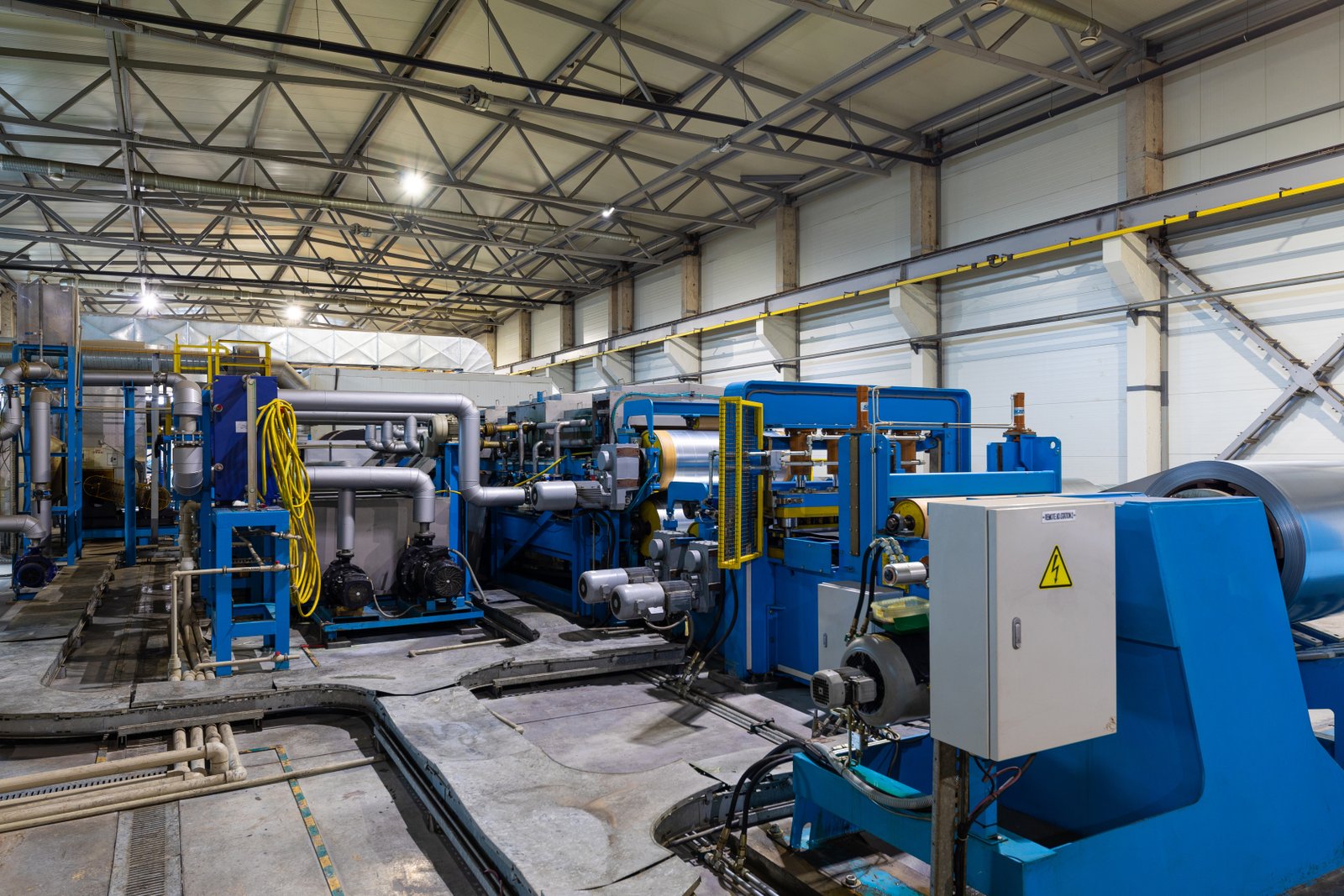
A comprehensive quality verification process is your shield against the inconsistencies that can plague the steel market. It’s about creating a system of checks and balances that ensures the material you pay for is the material you receive, every single time. Beyond the initial sample, you should discuss how the supplier ensures lot-to-lot consistency. What statistical process controls (SPC) do they use during annealing?5 Can they provide data showing the consistency of hardness, tensile strength, or surface finish across an entire production run? A top-tier supplier will be able to provide this data, as their modern furnaces and control systems are continuously logging this information. Their confidence in sharing this data speaks volumes about their commitment to quality. This isn’t about being adversarial; it’s about establishing a transparent, data-driven partnership. When both you and your supplier are looking at the same objective quality data, it builds a foundation of trust and mutual respect, ensuring a stable, long-term relationship that benefits both parties.
Deconstructing the Mill Test Certificate (MTC)
The Mill Test Certificate (MTC), or Mill Test Report (MTR), is the material's birth certificate. It is the primary document that attests to its quality and conformity to a specific standard (like ASTM or EN). However, not all MTCs are created equal, and knowing what to look for is crucial. A thorough MTC should provide a detailed breakdown of the material's chemical composition, listing the percentages of key elements like Chromium (Cr), Nickel (Ni), Molybdenum (Mo), and Carbon (C). You must compare this against the required specification for the grade you ordered.
Beyond chemistry, the MTC must detail the mechanical properties achieved after annealing6. Look for values like Tensile Strength (MPa or psi), Yield Strength (MPa or psi), and Elongation (%). These figures tell you how the material will behave under stress during your forming, stamping, or drawing processes. For bright annealed steel, a key parameter that is often overlooked on a basic MTC is surface roughness (Ra). A premier supplier will be able to provide this value, as it is a direct measure of the effectiveness of the bright annealing process. We advise our furnace customers to establish an agreed-upon Ra value with their clients, a practice every steel buyer should adopt with their suppliers.
ly, verify the traceability of the MTC. It should clearly list the Heat Number (the identifier for the specific batch of molten steel) and the Lot or Coil Number. This ensures that the document you are holding corresponds directly to the physical material you have received. A supplier who cannot provide a clear, traceable MTC for every coil should be a major red flag.
The Critical Role of Sample Evaluation and In-House Testing
The MTC provides the theoretical data; a physical sample allows you to verify it in the real world of your own facility. Never commit to a large order without first evaluating a representative sample. This sample should be large enough to allow for a comprehensive series of tests that mimic your actual production processes. For a client manufacturing automotive components, this might involve deep drawing, bending, and welding the sample to see how it performs.
Your in-house testing should focus on the properties most critical to your application. For many, this starts with a visual inspection. Is the surface truly bright, free of cloudiness, pits, or scratches? Use a profilometer or a surface roughness tester to get a quantifiable Ra reading and compare it to your specification. Next, perform your own mechanical tests. A simple bend test can be very revealing about the material's ductility and the quality of the anneal. Hardness testing (using Rockwell or Vickers methods) is another quick and effective way to verify that the material meets the specified temper.
I worked with a customer who produced high-end appliance housings. They began experiencing cracking issues during the press-brake forming stage. Their supplier's MTCs all looked fine. However, when we advised them to start testing samples from the start, middle, and end of each coil, they discovered a hardness variation. The supplier's old annealing furnace had poor temperature uniformity, causing some parts of the coil to be harder than others. This simple in-house testing protocol saved them from processing thousands of dollars worth of defective material.
Assessing a Supplier's Quality Management System (QMS)
A supplier’s commitment to quality extends beyond a single batch of steel. It is embedded in their culture and daily operations, and the best way to verify this is by assessing their Quality Management System (QMS). The most common indicator of a formal QMS is an ISO 9001 certification7. This certification demonstrates that the supplier has established, and is audited on, processes for ensuring consistency, managing non-conformance, and pursuing continuous improvement.
However, don't just stop at seeing the certificate. Ask the supplier about their QMS in more detail. How do they handle a customer complaint or a non-conforming product? Can they describe their root cause analysis process? A reliable supplier will have a clear, well-documented procedure for identifying the source of a problem and implementing corrective actions to prevent it from happening again. This is where the technology they use becomes critical. A supplier using a modern AKS furnace, for example, can pull historical data on temperature, atmosphere, and line speed for the exact time a specific coil was processed, allowing for a precise root cause analysis rather than guesswork.
For industries with higher stakes, like automotive or aerospace, you might look for more stringent certifications like IATF 169498. Even if your industry doesn't require it, a supplier who holds such a certification is demonstrating a superior level of process control and quality commitment. Inquiring about their QMS reveals their quality philosophy: are they merely inspecting defects out, or are they building quality into the process from the very beginning?
What should you ask about the supplier's production capabilities and customization options?
Your product designs are unique, so why settle for one-size-fits-all steel? Relying on a supplier with limited production capabilities can stifle your innovation and force you into design compromises. You might be forced to accept standard widths or tempers that aren't optimal for your process.
Ask potential suppliers about their production volume capacity, the range of thicknesses and widths they can handle, and their flexibility for customizing properties like hardness, surface finish, and edge conditioning. This ensures they can meet both your current needs and future growth requirements. In-depth guide to evaluating steel supplier capabilities
A supplier's capabilities are a direct reflection of their investment in technology and equipment. A company operating a single, older annealing line will have vastly different capabilities than one operating multiple, modern, high-speed lines. When I speak with potential buyers for our AKS furnaces, the conversation always centers on flexibility and range. Can the furnace handle ultra-thin gauge foil as well as thicker-gauge strip? How quickly can it be switched over to process a different grade of steel? These are the same questions you should be asking your steel supplier. I have a client in Southeast Asia who produces a wide variety of electronic components. They source their BA steel from a supplier who operates several continuous mesh belt furnaces. This allows the supplier to dedicate certain lines to specific thickness ranges, offering my client incredible flexibility and short lead times, even for small, custom orders. This capability allows the component manufacturer to say "yes" to more projects and innovate faster.

When you explore a supplier's capabilities, you are essentially determining if they can grow with you. Your needs today might be for 10 tons of standard-width 304 coils per month. But what happens next year when you land a major contract that requires 50 tons of a special-temper 430A steel at a non-standard width? A supplier with limited capabilities will either turn you down or offer unacceptable lead times. A forward-thinking partner, however, has the production bandwidth and technical flexibility to scale with your success. Ask them about their total annealing capacity (tons per month), their typical lead times for standard versus custom orders, and their process for new product development. Do they have a dedicated technical team to work with you on developing a custom-annealed product? What is a continuous mesh belt furnace and its advantages for processing steel?9 A supplier who sees customization as an opportunity rather than a burden is the kind of partner who will contribute to your competitive advantage. Their investment in versatile, high-performance annealing furnaces is a direct investment in your ability to innovate and capture new markets.
Assessing Production Volume and Scalability
A key question for any supplier is their total production capacity and current utilization rate. This information is critical for assessing their ability to handle your current volume and, more importantly, any future increases in demand. A supplier running at 95% capacity may struggle to accommodate an urgent or larger-than-usual order, leading to long lead times and potential disruptions to your production line.
Inquire about the number and type of annealing furnaces they operate. A supplier with multiple continuous bright annealing lines has built-in redundancy and flexibility. If one line is down for maintenance, they can shift production to another, ensuring a stable supply for their customers. This is a significant advantage over a supplier with only a single furnace, where any downtime means a complete halt in production. For example, our larger furnace installations for steel mills often involve multiple lines specifically to provide this operational security. Differences between batch and continuous annealing in steel processing10
Furthermore, ask about their scalability. What are their plans for expansion? Are they investing in new equipment to increase capacity or add new capabilities? A supplier who is actively investing in their facility, like purchasing a new energy-efficient furnace with waste heat recovery, is not only planning for growth but also committed to long-term efficiency and sustainability. This forward-looking approach is a strong indicator of a reliable, long-term partner who will be able to support your business as it scales.
Understanding the Range of Physical Specifications
Every manufacturing process has an optimal set of material specifications. The closer a supplier can get to these ideal specs, the more efficient your process will be. This is why a detailed discussion about their capabilities regarding physical dimensions and tolerances is essential. Start with the basics: what are their minimum and maximum limits for thickness and width? A supplier equipped with a modern 20-Hi cold rolling mill and a precision annealing line can offer a much wider range and tighter tolerances than a competitor with older equipment.
Go beyond the basics and ask about edge conditioning. Can they provide a slit edge, a deburred edge, or a rounded edge? For certain applications, like producing components that will be handled frequently, a smooth, rounded edge can be a critical safety and quality feature, eliminating a secondary processing step for you. Similarly, discuss coil specifications. What are their standard inner diameter (ID) and maximum outer diameter (OD) and coil weight limits? Ensuring their coils are compatible with your uncoiling equipment is a simple but crucial detail that prevents logistical headaches.
The ability to deliver precise specifications directly impacts your yield and scrap rate. If you need a strip width of 250mm and a supplier can only guarantee a tolerance of +/- 1mm, you are losing material on every coil. A top-tier supplier with advanced slitting and annealing technology might offer a tolerance of +/- 0.1mm, maximizing your material usage and improving your bottom line.
The Power of Customization: Temper, Finish, and Beyond
The true test of a supplier's capability lies in their ability to customize the material's properties to your exact needs. This is achieved through precise control of the annealing and tempering process. The "temper" of the material—its hardness and ductility—is one of the most critical properties to customize. A standard "full hard" or "dead soft" anneal might not be optimal. An advanced supplier can provide a range of tempers (quarter-hard, half-hard, etc.) by carefully controlling the annealing cycle or adding a subsequent temper rolling pass.
I worked with a client producing metal bellows for industrial sensors. They required a very specific combination of ductility (for forming the bellows) and spring-back (for the sensor to function correctly). No off-the-shelf material worked. We connected them with a steel processor who used a highly controllable Bell-Type Annealing Furnace. Working together, they developed a custom multi-stage annealing cycle that produced a unique temper with the exact properties the client needed. This collaboration resulted in a superior product and gave the client a significant competitive advantage.
This level of customization extends to the finish as well. While "bright annealed" is the goal, different levels of brightness or reflectivity can be achieved. Ask the supplier if they can target a specific surface roughness (Ra) value. Can they offer protective coatings or specialized packaging to preserve the delicate finish during transit? How is surface roughness (Ra) measured and why does it matter in steel processing?11 A supplier who is willing and able to engage in these detailed, technical discussions is a partner who can help you push the boundaries of your own product design and performance.
How can you assess the supplier's reliability and customer service?
You've found a supplier with great quality and capabilities, but what happens when something goes wrong? A supplier who is unresponsive or unhelpful during a crisis can be more damaging than one who delivers slightly off-spec material. Reliability is not just about on-time delivery; it's about partnership.
To assess a supplier's reliability, inquire about their on-time delivery metrics and order tracking protocols, communication protocols for order tracking and problem resolution, and the level of technical support they provide. Asking for customer references can also provide invaluable insight into their dependability and service quality.
A supplier's true character is revealed in how they handle challenges. Do they have a dedicated customer service team, or does your call get routed to a generic voicemail? More importantly, is their technical team accessible to you? At AKS, we don't just sell furnaces; we provide ongoing support. I often find myself on video calls with clients' engineers, troubleshooting process parameters or discussing how to optimize the furnace for a new material. You should expect a similar level of partnership from your steel supplier. Their ability to provide expert advice on material selection and welding parameters12 is an invaluable service that goes far beyond the transactional nature of simply selling steel. A reliable partner invests in your success because they know it is intertwined with their own.
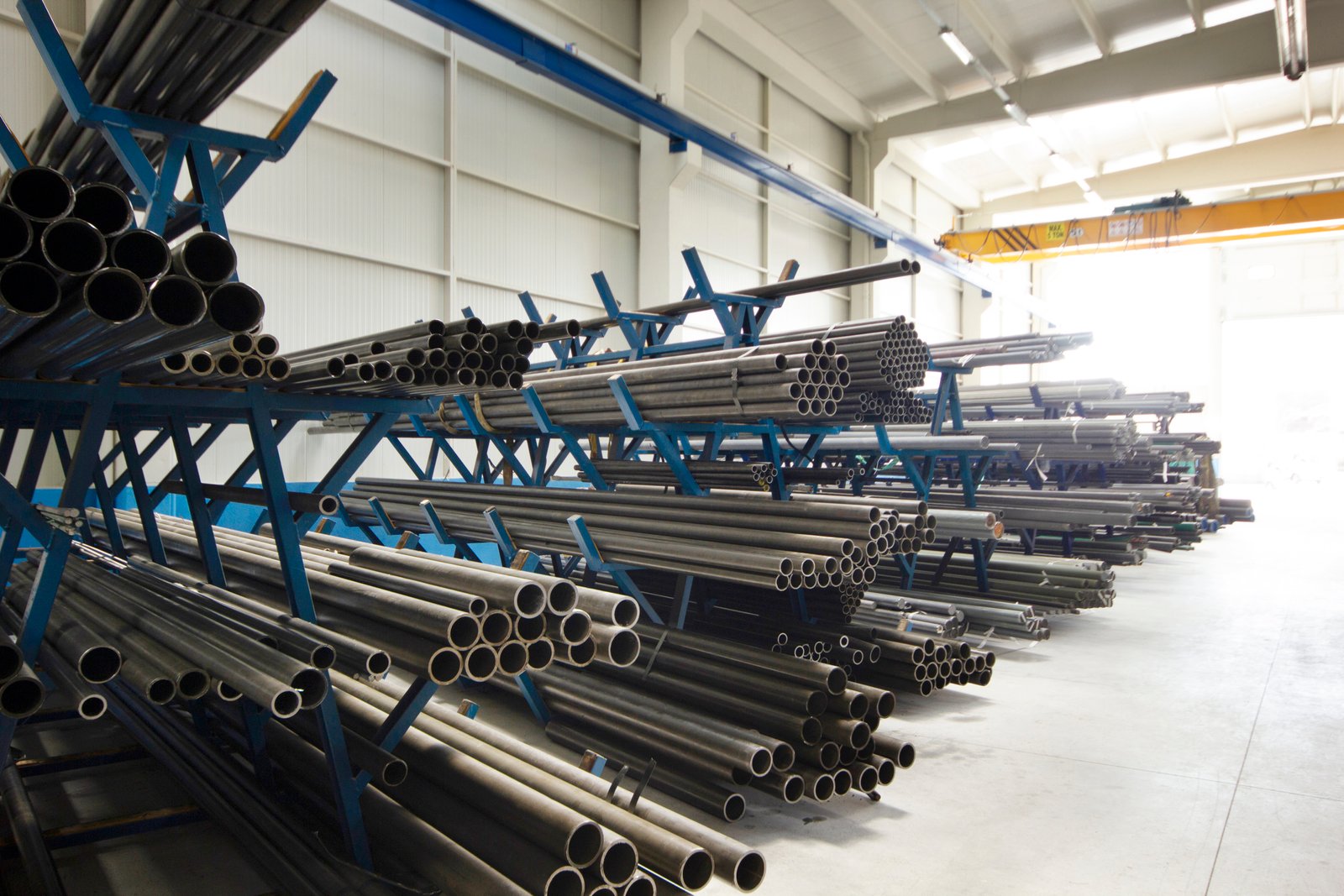
Assessing reliability is about looking for evidence of a customer-centric culture. This permeates every aspect of their business, from the clarity of their quotations to the care they take in packaging your coils. Before signing a contract, ask for a tour of their facility, either virtually or in person. Pay attention to the details: Is the plant clean and organized? Are the staff knowledgeable and engaged? This provides clues about their operational discipline. A well-organized facility is often indicative of a well-organized company that is less likely to make mistakes with your order. Furthermore, probe their communication practices. Will you have a single point of contact? How will they notify you of a potential delay? A proactive communicator who alerts you to a potential issue before it becomes a crisis is infinitely more valuable than a supplier who leaves you in the dark. Ultimately, you are searching for a partner who demonstrates a deep-seated commitment to operational excellence and transparent, proactive communication.
Evaluating On-Time Delivery and Lead Time Consistency
Consistent, predictable deliveries are the foundation of a reliable supply chain and are essential for lean manufacturing. The first step is to ask a potential supplier for their average on-time delivery (OTD) percentage13 over the last 12 months. A reputable supplier should track this metric and be willing to share it. An OTD rate of 95% or higher is a good benchmark, but it's also important to understand how they define "on-time."
Beyond the metric, discuss the factors that influence their lead times. Quoted lead times should be realistic and repeatable. Ask them: "What is your standard lead time for the product I need, and what can cause that to vary?" Their answer will reveal their understanding of their own production planning and capacity. Do they have a robust Sales and Operations Planning (S&OP) process? A supplier who can give you a confident, data-backed answer is likely more organized and reliable than one who is vague.
I have a client who manufactures precision metal stampings, where every hour of press downtime costs thousands of dollars. They built a supply chain scorecard where lead time consistency accounts for 40% of a supplier's rating. Their primary steel supplier uses an advanced ERP system integrated with their furnace production lines. This allows them to provide highly accurate delivery estimates and proactively re-route orders if a production issue arises. This level of logistical sophistication is a hallmark of a truly reliable partner.
The Importance of Communication and Technical Support
When you have a technical question or a problem, the quality and speed of the response are critical. Before you commit, you need to understand what that support structure looks like. Ask who your dedicated point of contact will be. Will you be working with a salesperson, or will you have access to a customer service representative or an account manager who can resolve issues directly?
Even more important is access to their technical team. Your engineers may have questions about the material's formability, weldability, or its performance in a corrosive environment. A top-tier supplier will have metallurgists or application engineers on staff who can provide expert guidance. Test this during the vetting process. Present them with a hypothetical technical challenge related to your application. For example, "We are considering switching from grade 304 to 430 for a deep-drawn part to save costs. What challenges should we anticipate during forming, and how would your material help us overcome them?" The depth and quality of their response will tell you everything you need to know about their technical acumen and willingness to act as a true partner.
This support is a form of insurance. A quick call to a knowledgeable technical expert who can help you solve a problem on your production line can save you days of downtime and experimentation. A supplier who invests in this expertise is investing in your success.
Using Customer References and Market Reputation
One of the most powerful ways to assess reliability is to learn from the experiences of others. Ask a potential supplier for two or three customer references—preferably from companies that are in your industry or have similar needs. A supplier who is confident in their service will be happy to provide these. When you speak with the reference, go beyond the generic "Are you happy with them?" question.
Ask specific, probing questions to get a clear picture of the supplier's performance:
- "How consistent have their lead times been over the past year?"
- "Can you describe a time when there was a problem (e.g., a late delivery, a quality issue)? How did the supplier handle it?"
- "How would you rate the quality of their technical support and communication?"
- "On a scale of 1 to 10, how easy are they to do business with?"
In addition to formal references, investigate their general market reputation through industry networks and online reviews14. While online information should be taken with a grain of salt, a consistent pattern of positive or negative feedback is often telling. A strong reputation for reliability and customer service is built over years of consistent performance and is one of the most compelling indicators that you have found a trustworthy partner.
What are the critical contract terms to confirm before purchasing bright annealing stainless steel?
An ambiguous contract is a recipe for future disputes. A handshake deal or a simple purchase order might seem efficient, but it leaves you exposed if quality issues, delivery delays, or price changes occur. A clear, comprehensive contract is your primary tool for managing risk.
Before purchasing, you must confirm critical contract terms including detailed quality specifications (with quantifiable metrics), clear acceptance and rejection criteria, payment and delivery schedules (Incoterms), and clauses addressing liability and price volatility. This creates a clear, legally binding understanding for both parties.
The contract is where all your preliminary questions and agreements are formalized. It transforms verbal promises into binding commitments. It’s crucial that the quality specifications you discussed are written down in detail. For instance, instead of just stating "bright annealed finish," the contract should specify "Surface Roughness (Ra) to be less than 0.1 µm." At AKS, when we sell a furnace, our contracts include detailed performance guarantees for temperature uniformity and atmosphere purity15 because we know these factors produce a quality finish. You must demand similar precision in your material supply contract. This protects you and sets a clear, objective standard for the supplier to meet, preventing subjective disagreements about quality down the line. A good contract fosters a good partnership by ensuring everyone is working from the same set of expectations.
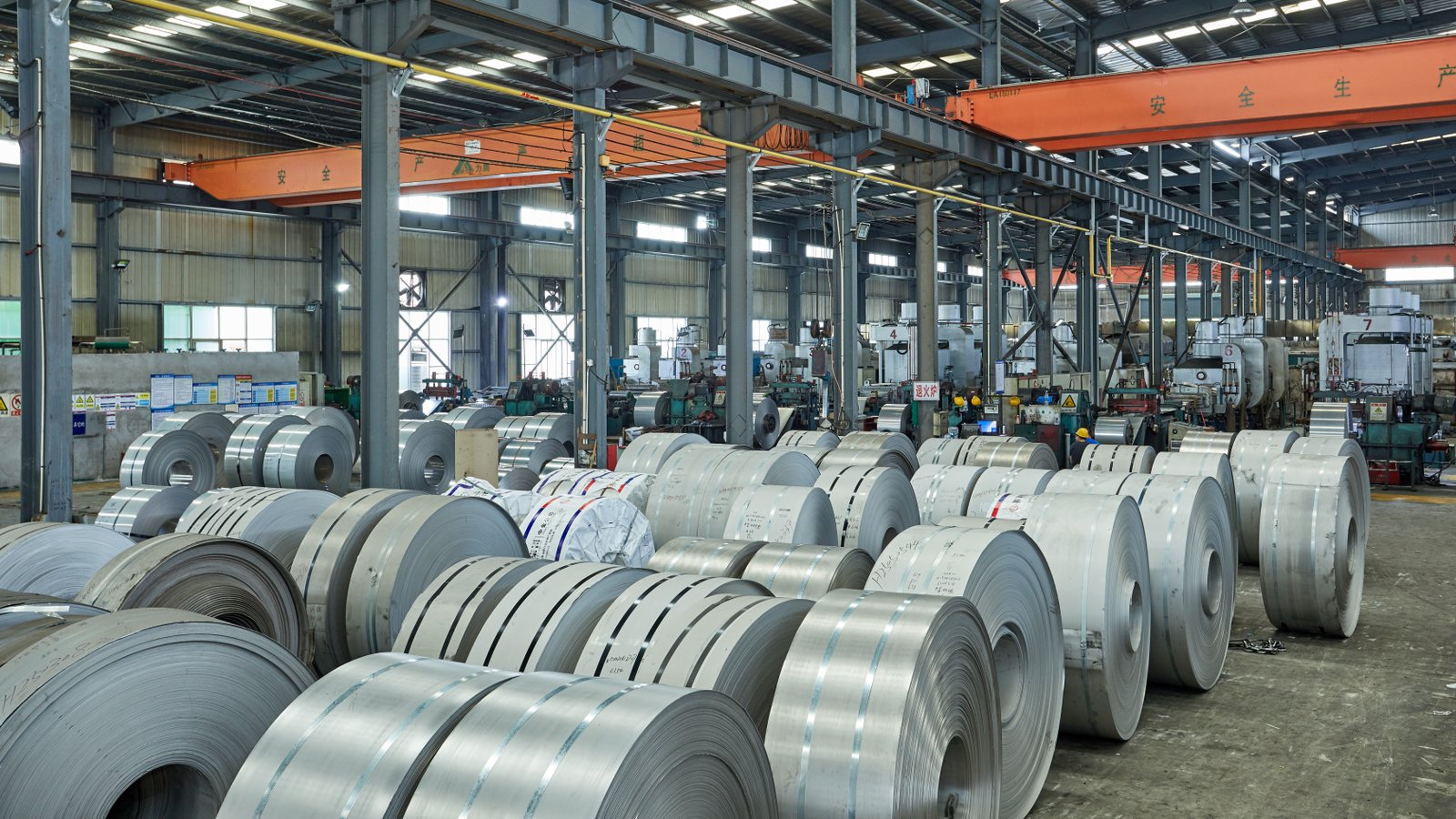
A well-structured contract does more than just protect you; it creates a predictable and stable framework for your business relationship. It should be seen as a collaborative document that aligns the goals of both the buyer and the seller. For example, including a clause for a joint quality review on a quarterly basis can foster communication and continuous improvement. Discussing and agreeing upon Incoterms (e.g., EXW, FOB, DDP)is vital as it clearly defines who is responsible for the goods at every stage of the shipping process, including transport, insurance, and customs clearance. This is especially critical for international shipments. Many of our clients in Europe and North America who source from Asia insist on DDP (Delivered Duty Paid) terms16 to simplify their logistics and provide cost certainty. By methodically working through these contractual details before you sign, you are not being difficult; you are being a prudent business manager, laying the groundwork for a transparent, successful, and long-lasting supply partnership.
Defining Quality Specifications and Acceptance Criteria
This is the most critical section of your supply contract. It must translate your technical requirements into legally enforceable terms. Vague language like "good quality" is useless. Your contract must contain quantifiable, measurable specifications. This section should be a detailed summary of the quality verification process we discussed earlier.
Your contract should explicitly state:
- Material Grade and Standard: e.g., "Stainless Steel, Grade 304, per ASTM A240."
- Chemical Composition: Reference the ASTM standard and list any special requirements for specific elements.
- Mechanical Properties: Provide specific ranges for Tensile Strength, Yield Strength, and Elongation. For example, "Tensile Strength: 515-620 MPa."
- Physical Dimensions: Specify thickness, width, and coil ID/OD with precise tolerances (e.g., "Thickness: 1.0mm +/- 0.05mm").
- Surface Finish: This is paramount for bright annealed steel. Specify the required finish (e.g., "BA - Bright Annealed") and, most importantly, a maximum surface roughness value (e.g., "Ra ≤ 0.1 micrometers").
Equally important are the acceptance and rejection criteria. The contract must clearly state the inspection methods to be used (e.g., "Surface roughness to be measured by a contact profilometer") and the process for handling non-conforming material. What happens if a coil is rejected? The contract should outline the supplier's responsibility, whether it's immediate replacement, a credit note, and who covers the return shipping costs.
Establishing Clear Payment and Delivery Terms
Logistical and financial clarity are essential to avoid misunderstandings. The contract must clearly define the payment terms. Is it Net 30, Net 60, or is a letter of credit required? Specifying the currency and payment method prevents any ambiguity. For large or custom orders, it's common to have a payment structure tied to milestones, such as a percentage upfront, a percentage upon shipment, and the final payment upon successful inspection and acceptance.
Delivery terms should be defined using internationally recognized Incoterms®. This is non-negotiable for international trade. Choosing the right Incoterm defines the exact point where risk and responsibility transfer from the seller to the buyer. The table below illustrates a few common options:
| Incoterm | Seller's Responsibility | Buyer's Responsibility | Best For |
|---|---|---|---|
| EXW (Ex Works) | Make goods available at their factory. | All transport, risk, and customs. | Buyers with strong logistics partners in the seller's country. |
| FOB (Free On Board) | Deliver goods to the vessel at the designated port. | Main carriage, insurance, import customs, and final delivery. | Buyers who want to control the main sea/air freight. |
| CIF (Cost, Insurance, and Freight) | Arrange and pay for transport and insurance to the destination port. | Import customs clearance and final delivery from the port. | Buyers who want the seller to handle shipping to their country's port. |
| DDP (Delivered Duty Paid) | Deliver goods to the buyer's final destination, including all transport, insurance, and customs duties. | Unloading the goods. | Buyers who want maximum convenience and a single, landed cost. |
Confirming the precise Incoterm in the contract eliminates any debate over who is responsible for freight costs, insurance, or unexpected customs fees.
Addressing Liability, Warranty, and Price Adjustments
A robust contract anticipates potential problems and defines a clear path to resolution. The warranty clause is a key part of this. The supplier should warrant that their product is free from defects in material and workmanship and that it conforms to the agreed-upon specifications. The contract should define the warranty period and the remedies available to you if a defect is discovered after acceptance, known as a latent defect.
Liability clauses define the extent of each party's financial responsibility in case of a breach of contract. For instance, if the supplier's defective material causes a shutdown of your production line, are they liable for your consequential losses? These clauses are often heavily negotiated, but it's crucial to have a clear understanding of the limits of liability for both sides.
ly, in today's volatile market, a price adjustment clause tied to a published commodity index can be beneficial for both parties. A fixed-price contract may be risky for a supplier if raw material costs (like nickel) skyrocket. This could lead them to cut corners or even default on the contract. A more balanced approach is to include a price adjustment mechanism tied to a published, independent commodity index (e.g., the LME Nickel price). This creates a fair and transparent way to manage price volatility, ensuring the supplier remains profitable and your supply remains stable.
Conclusion
Choosing the right bright annealed stainless steel supplier goes beyond price. By methodically asking about their experience, quality verification, production capabilities, and contract terms, you secure a reliable partner whose process mastery ensures you receive consistently superior material, safeguarding your production quality and corporate reputation.
-
Understand how advanced furnace technology and technical know-how affect final steel properties. ↩
-
Discover how a metallurgical approach helps prevent defects and optimizes steel performance. ↩
-
See how the protective atmosphere prevents oxidation and enhances surface finish quality. ↩
-
Learn why precise dew point matters for oxidation prevention and product consistency. ↩
-
Discover how SPC ensures lot-to-lot consistency during the annealing of stainless steel. ↩
-
Find out which mechanical properties are most important for stainless steel performance. ↩
-
Understand the significance of ISO 9001 for supplier quality assurance in the steel industry. ↩
-
Learn about IATF 16949 and its importance in the automotive and aerospace sectors. ↩
-
Learn about continuous mesh belt technology and its impact on flexible steel processing ↩
-
Understand how batch and continuous annealing methods affect production efficiency and flexibility ↩
-
Find out why Ra value is critical for surface finish specification and product performance ↩
-
See how expert supplier guidance can prevent costly production issues and optimize material usage ↩
-
Discover benchmarks for supplier OTD rates and understand their significance for lean operations ↩
-
Find out how to check supplier credibility and reliability via industry feedback and customer reviews ↩
-
Find out why temperature and atmospheric control matter for stainless steel finish quality ↩
-
See how DDP terms impact import logistics, costs, and buyer risk for global supply chains ↩
